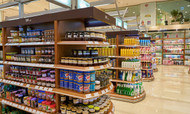How To Design An Effective Planogram For Cross-Merchandising
Published by Global Display Solution on April 17, 2024, 10:55 pm
Cross-merchandising is a dynamic retail strategy aimed at boosting sales and enhancing customer experience by strategically placing complementary products together. An essential component of executing a successful cross-merchandising strategy is the creation of an effective planogram.
In this article, we will learn about the intricacies of planogram design and actionable tips for optimizing cross-merchandising efforts.
Understanding Cross-Merchandising
Cross-merchandising involves the strategic placement of related products from different categories to encourage additional purchases. The goal is to capitalize on the natural associations between products and inspire customers to make impulse buys.
By grouping items such as peanut butter and jelly or batteries and electronics, retailers can leverage consumer behavior and increase sales.
Identifying Complementary Products
The foundation of an effective planogram begins with identifying complementary products that have synergy and can be paired together seamlessly.
Retailers should analyze their inventory and identify items that are frequently purchased together or have a logical connection. For example, a hardware store might pair paintbrushes with cans of paint or light bulbs with fixtures.
Analyzing Shopping Patterns
Successful cross-merchandising hinges on understanding customers' shopping patterns and preferences.
Retailers can gather data on which products are commonly purchased together and which areas of the store receive the most foot traffic. By analyzing this information, retailers can strategically position products to maximize visibility and encourage impulse buys.
Creating a Visual Hierarchy
Visual hierarchy plays a crucial role in guiding customers through the shopping experience and influencing their purchasing decisions.
When designing a planogram for cross-merchandising, it's important to create a visual hierarchy that highlights key products and encourages engagement. Placing high-demand items at eye level or within easy reach can attract attention and drive sales.
Optimizing Space and Layout
Effective planogram design requires careful consideration of space and layout to maximize sales potential.
You can take into account factors such as aisle width, traffic flow, and product placement to create a seamless shopping environment. By grouping similar items together and leaving room for flexibility, retailers can adapt to changing customer preferences and seasonal trends.
Measuring and Adjusting
Once a planogram is implemented, it's essential to monitor its effectiveness and make adjustments as needed.
Regularly measure sales data, gather customer feedback, and assess inventory levels to identify areas for improvement. By staying agile and responsive, you can refine your cross-merchandising strategy and optimize performance over time.
At The Global Display Solution, we specialize in providing retailers with the tools they need to design and execute successful merchandising strategies. Our extensive range of retail fixtures and display solutions includes merchandising dump bins, retail racks, shelf liners, and label holders.
Our merchandising dump bins are perfect for showcasing promotional items or clearance merchandise, while our retail racks and floor-standing displays offer versatile solutions for showcasing products in high-traffic areas.
Additionally, our shelf liners and label holders help retailers organize and label merchandise effectively, enhancing the shopping experience for customers. Whether you're looking to create eye-catching displays or optimize space in your store, we have the products and expertise to help you achieve your goals.

